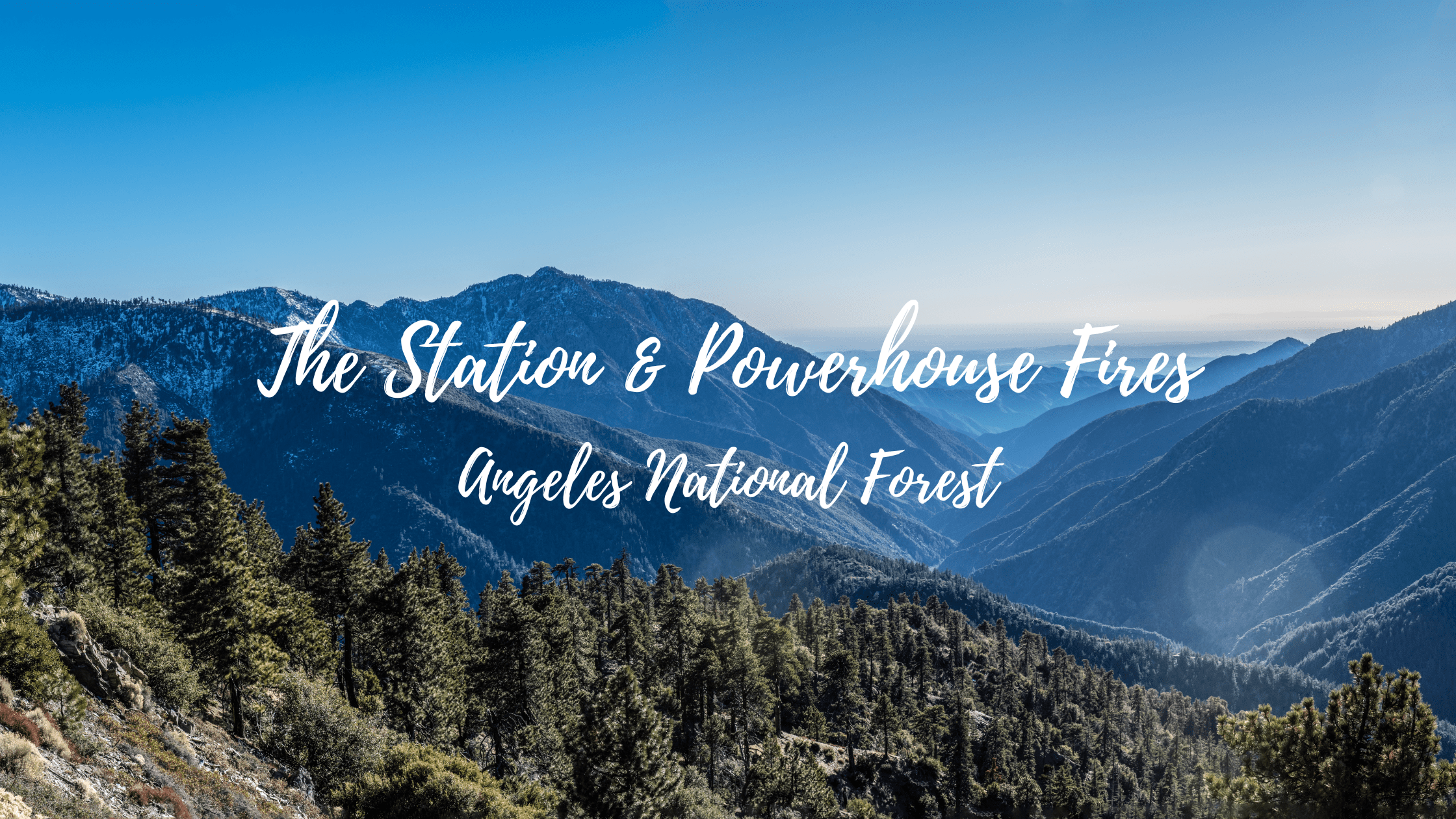
A Living Tribute
Blog
Recent Posts
-
 Read More
Read More🌿 Restoring the Angeles After the Station and Powerhouse Fires
Rebuilding a Resilient Forest in Southern California
The Angeles National Forest and San Gabriel Mountains have long stood as some of Southern California’s most cherished natural spaces. But in recent years, these landscapes have endured devastating wildfires that reshaped their ecology and tested the resilience of the land.
Two of the most destructive — the Station Fire (2009) and the Powerhouse Fire (2013) — together scorched nearly 190,000 acres of forest. Recovery has taken more than a decade of coordinated reforestation, careful planning, and collaboration. New trees will take root primarily in the Charlton-Chilao and Lake Hughes areas—places where both natural stands and earlier tree plantations have been heavily impacted by not only fire, but drought and insects.
🔥 The Station Fire (2009)
Igniting on August 26, 2009, along the Angeles Crest Highway, the Station Fire quickly became one of the largest in Los Angeles County’s history, consuming over 160,000 acres of the Angeles National Forest — roughly a quarter of the entire forest. It destroyed 89 structures, claimed two firefighters’ lives, and left behind slopes vulnerable to erosion and invasive weeds.
Unlike many Southern California fires, the Station Fire’s rapid spread wasn’t driven by wind but by severe drought, low humidity, and accumulated fuels after decades of fire suppression. Entire high-elevation pine forests and lower mixed-conifer stands were lost.
In its wake, the Forest Service began replanting efforts in priority zones such as Charlton–Chilao, where natural regeneration was limited. The work includes removing invasive species, stabilizing watersheds, and reestablishing native conifers across thousands of acres of burned terrain. Today, projects in this area continue to restore habitats for wildlife and prevent soil loss in the Big Tujunga watershed — an area critical for the region’s water supply and biodiversity.
🔥 The Powerhouse Fire (2013)
Four years later, the Powerhouse Fire ignited on May 30, 2013, near Lake Hughes, burning through 30,274 acres of rugged terrain before containment on June 8. Investigations traced the ignition to electrical equipment failure. The fire destroyed 53 structures and deforested roughly 10,000 acres of woodland, where more than half the mature trees were lost.
Reforestation efforts like the Sawmill–Liebre and Powerhouse Fire Restoration Projects are replanting native tree species across burned slopes and canyons to rebuild forest structure and watershed health. These efforts aim for 75–100 trees per acre surviving after five years — a benchmark for successful forest recovery in challenging post-fire environments.
🌱 What’s Being Planted
Current reforestation across the Angeles National Forest includes about 61,750 tree seedlings planted over 640 acres, focusing on Charlton–Chilao and Lake Hughes — both key recovery areas from the Station and Powerhouse burn scars.
Tree seedlings are selected for resilience to drought, elevation, and fire stress. The seedling mix includes:
-
Coulter Pine (Pinus coulteri) – drought-tolerant and deep-rooted, ideal for steep terrain
-
Jeffrey Pine (Pinus jeffreyi) – adapted to higher elevations, with aromatic bark
-
Ponderosa Pine (Pinus ponderosa) – fast-growing and ecologically foundational
-
Sugar Pine (Pinus lambertiana) – vital for biodiversity and forest canopy structure
-
Bigcone Douglas-fir (Pseudotsuga macrocarpa) – a Southern California native critical for slope stability and wildlife habitat
These tree plantings are monitored for survival rates and complemented by weeding, invasive control, and erosion protection, ensuring each tree has the best chance to thrive.

🌄 Healing the Land, One Tree at a Time
Reforestation is a long-term process — it can take decades before planted areas resemble mature forests again. Yet each sapling represents resilience: stabilizing soil, restoring habitat, capturing carbon, and laying the foundation for a living forest that future generations can enjoy.
The Angeles National Forest’s ongoing replanting work stands as a model for climate-adaptive restoration in California’s fire-prone landscapes. Through partnerships and public support, this once-charred terrain is steadily returning to life — tree by tree.

🌿 Help Restore California Forests
Every tribute tree funds the planting of a native seedling in California’s National Forests — including the Angeles National Forest, where the Station and Powerhouse restoration continues today. Your tree helps rebuild habitats, restore natural beauty, and leave a lasting legacy of renewal.
👉 Plant a Tribute Tree in California
Together, we’re bringing life back to California forests like the Angeles — one tree, one acre, and one legacy at a time.
Rebuilding California Forests: Native Tree Planting in the San Gabriel Mountains
-


